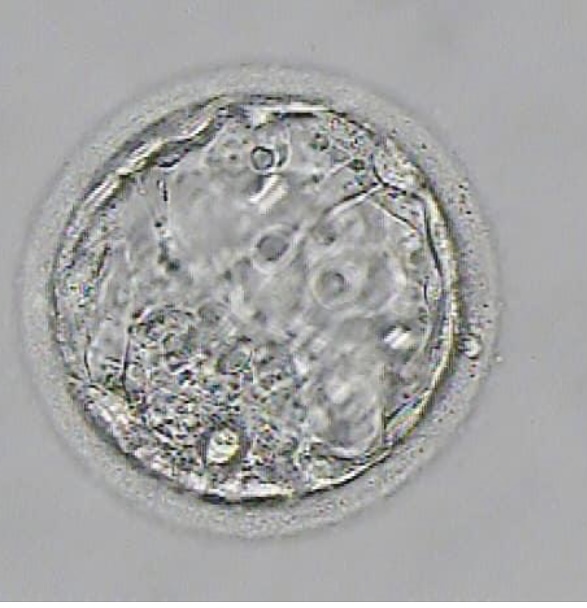How the Embryo Transfer Process Works in Gestational Surrogacy
One of the most awe-inspiring parts of surrogacy and a testament to how far Assisted Reproduction technology has come is the embryo transfer process. In gestational surrogacy, an embryo from one or more intended parents is created via in vitro fertilization (IVF) then placed directly into the uterus of a surrogate who is not the biological mother of the child(ren) she will carry. The embryo transfer is the critical first milestone towards a successful surrogacy journey.
Wondering how the surrogacy embryo transfer process works? Read on to learn what to expect.
Step 1: IVF and Embryo Creation
Before an embryo is created, the process starts with an egg. An intended mother (or egg donor) will undergo a medical consultation to determine if she is a good candidate for the egg retrieval procedure. During a formal evaluation, a fertility specialist will determine the ovarian reserve through hormone tests and a psychical exam which includes an ultrasound and examination of a patient’s medical history. A qualified fertility specialist will also determine whether an intended mother or egg donor has known health issues that might affect the safety of the procedure or point to a minimal chance of a successful retrieval.
Assuming she is in good health and her eggs are viable, the intended mother (or egg donor) will start a hormone and medication regimen. Following a protocol of self-injected hormones lasting a little over a week, the ovarian follicles will be stimulated to produce a desired number of eggs. During the stimulation process, the ovaries will be closely monitored via blood tests and ultrasound examinations. Medication may be altered depending on follicle development. Once the follicles have reached their optimal size, a “trigger shot” will be administered to help the eggs mature and induce ovulation. Mature eggs will then be collected via an egg retrieval procedure.
Egg retrievals are usually done under sedation to minimize patient discomfort. During the procedure a needle guided by an ultrasound and connected to a small suction device will gather eggs directly from the follicles. Eggs that are retrieved will then placed be into a culture medium. The gathered eggs will be inspected for quality, only eggs that are deemed healthy will be combined with sperm retrieved from an intended father or sperm donor. With any luck, healthy embryos will result. Only viable embryos will be considered for transfer. It’s typical for some embryos to develop poorly and ultimately become discarded.
Step 2: Embryo Grading and Selection
An embryologist will evaluate each embryo for quality and potential. He/she will examine certain characteristics such as cell number, morphology, symmetry, fragmentation, and cytoplasm quality. Embryos will develop for several days and reach their blastocyst stage at around day 5 or 6. Blastocysts are graded on a numerical and alphabetical system. A fertility specialist will use this grading system to evaluate which embryo(s) to transfer first and which ones will be stored or discarded.
Step 3: Embryo Transfer
Before an embryo transfer is scheduled, a surrogate must be medically and legally cleared, including having a final surrogacy agreement in place. Lawyers from both sides will make sure all parties are on the same page with respect to the type of surrogacy journey they desire. This includes agreement on compensation, insurance, pregnancy protocols, travel restrictions, how to address any unexpected medical complications, and the rights and responsibilities of the both the intended parents and the surrogate. Many clinics will not schedule an embryo transfer without seeing evidence of a fully executed surrogacy contract.
The gestational surrogacy embryo transfer process itself is identical to the process for a biological mother. Before transfer, a surrogate takes hormonal medications including estrogen and progesterone to increase the thickness of her uterine lining with the goal of creating the most optimal environment for embryo implantation. Once a surrogate’s uterus has reached the desired thickness, an embryo transfer takes place. The procedure is minimally invasive, only mild sedatives are used if desired. Using an ultrasound guide, an embryologist will place an embryo into a syringe attached a small catheter. The embryo is guided into the uterus. When the embryo makes direct contact with the uterine lining, apposition hopefully occurs and the embryo attaches itself directly onto the endometrium.
Following embryo transfer, a surrogate usually continues to take progesterone to encourage embryo implantation and growth. At around 10-14 days post transfer, the surrogate will take a pregnancy test to determine if the embryo transfer was successful. hCG (human chorionic gonadotropin) levels are measured to ascertain confirmation of a pregnancy, how the pregnancy is progressing, and to identify potential issues.
 Step 4: Pregnancy
Step 4: Pregnancy
During pregnancy, a surrogate will be regularly monitored to promote a healthy pregnancy and to make sure the fetus is growing as expected. Her first prenatal visit with her own OB-GYN usually starts at around 8 weeks into the pregnancy. She will receive a physical exam and routine urine and blood tests. Her doctor will go over standard prenatal care including a discussion of lifestyle and vitamin/diet recommendations. A first ultrasound can be done then as well. Prenatal ultrasounds ascertain viability, detect a fetal heartbeat, locate a baby’s position in the uterus, and detect early problems with fetal development.
Following the first visit, a surrogate’s healthcare provider will set a schedule for future checkups and monitoring. As the pregnancy progresses, visits will increase from once a month to once very 2 weeks and eventually weekly visits closer to delivery.
If recommended, an amniocentesis or chorionic villus sampling (CVS) can be done to identify potential chromosomal abnormalities or genetic disorders.
Step 5: Delivery
If there are no complications and the pregnancy develops in a healthy manner, at around 37-40 weeks a surrogate will deliver a full-term baby. For a surrogate, the most indescribable feeling is handing the gift of life over to grateful Intended Parents. While this is one of the greatest moments in an Intended Parent’s life, it’s also incredibly rewarding for the surrogate.
The child(ren) are placed into an Intended Parent(s)’ care immediately following birth. They will care for the child, stay at the hospital with the child, and immediately assume all financial responsibility for medical costs. If there are no complications and the baby is full-term, Intended Parents can usually leave the hospital with their child 48 hours later.
Step 6: Deciding What to Do With Any Extra Embryos
Deciding what to do with any leftover embryos can often be an emotional decision. Your options include short or long-term storage for potential future use during a sibling surrogacy journey, donating them to other hopeful parents (anonymously or via an open adoption process), discarding them, or gifting them for scientific research purposes. There’s also the option of a “compassionate transfer” which is when an embryo is transferred at a time when a pregnancy is highly unlikely to occur.
Deciding which option is right for you is an entirely personal decision and is based on your own finances, ethics, preferences, and values. Many doing a sibling journey will often ask their surrogate if they want to do another journey with them. If the surrogate is interested in doing surrogacy again and she has had a positive experience with her Intended Parents and the pregnancy, she will generally offer her services again.










